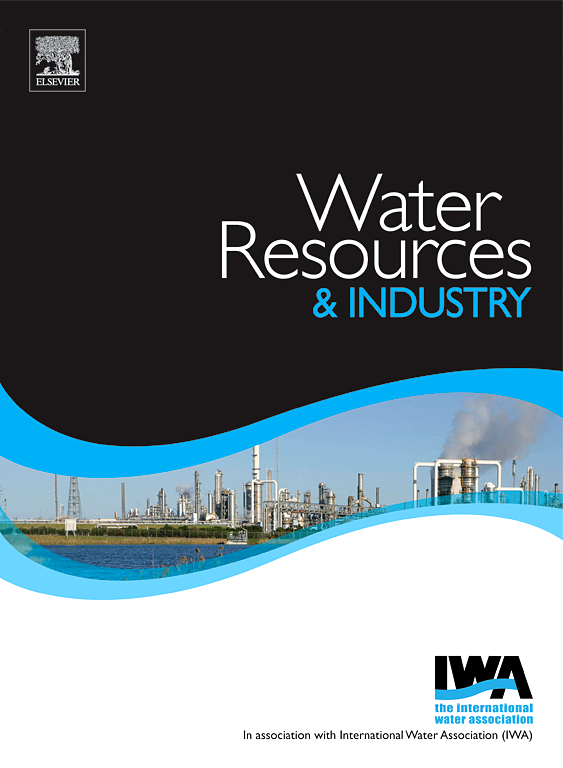Occurrence, sources and impacts of benzotriazoles and bisphenols in water bodies within protected areas: Killarney National Park, Ireland
IF 7.5
3区 工程技术
Q1 WATER RESOURCES
引用次数: 0
Abstract
Despite their protected status, national parks may serve as receptors for anthropogenic pollutants such as benzotriazoles (BTRs) and bisphenols (BPs), raising concerns about aquatic ecosystem health and public exposure. In this context, this study aims to assess the occurrence of six BTRs and ten BPs across two sampling campaigns (SCs) in the lakes and streams of Killarney National Park (KNP), Ireland, revealing spatial variation across six sampling points (SPs). A Wilcoxon test revealed no statistically significant differences between individual concentrations in the two SCs. This research utilized ultrasound-assisted emulsification-microextraction for analytes isolation and gas chromatography-mass spectrometry for detection (USAEME-GC/MS) to determine BTRs and BPs concentrations in KNP's water bodies. Among the 34.4 % of occurrences above the limit of detection, BPA, 5Cl-BTR, and UV-P were consistently found across all sampling points and campaigns. Two BTRs (1H-BTR, 4Me-BTR) and five BPs (BPC, BPCl2, BPE, BPG, BPM) were below detection levels in both SCs. The maximum concentrations for BTRs reached 1.537 μg/L (5Cl-BTR, SP2, SC2). BPA concentrations peaked at 7.753 μg/L (SP6, SC2), exceeding the EU's predicted no-effect concentration for freshwater (1.5 μg/L) in six instances across the KNP samples. These findings highlight the importance of targeted monitoring and management strategies in protected areas, which align with the EU Water Framework Directive objectives. This preliminary exploration of BTRs and BPs in KNP water bodies could serve as a valuable basis and benchmark for assessing environmental quality in KNP and similar protected areas worldwide.

保护区内水体中苯并三唑和双酚的发生、来源和影响:爱尔兰基拉尼国家公园
尽管处于受保护状态,但国家公园可能成为人为污染物的受体,如苯并三唑(BTRs)和双酚(bp),这引起了人们对水生生态系统健康和公众暴露的担忧。在此背景下,本研究旨在评估爱尔兰基拉尼国家公园(KNP)湖泊和溪流中两个采样活动(SCs)中6个btr和10个bp的发生情况,揭示6个采样点(SPs)的空间变化。Wilcoxon试验显示,两种SCs的个体浓度之间没有统计学上的显著差异。本研究采用超声辅助乳化-微萃取分离分析物,气相色谱-质谱法(USAEME-GC/MS)检测KNP水体中BTRs和BPs的浓度。在超过检测限度的34.4%的事件中,BPA、5Cl-BTR和UV-P在所有采样点和活动中都被一致发现。2种btr (1H-BTR、4Me-BTR)和5种BPs (BPC、BPCl2、BPE、BPG、BPM)在两种SCs中均低于检测水平。BTRs (5Cl-BTR、SP2、SC2)最高浓度达1.537 μg/L。在KNP的六个样本中,BPA浓度最高达到7.753 μg/L (SP6, SC2),超过了欧盟预测的淡水无影响浓度(1.5 μg/L)。这些发现突出了保护区有针对性的监测和管理战略的重要性,这与欧盟水框架指令的目标是一致的。对KNP水体中btr和bbp的初步探索可作为评估KNP和全球类似保护区环境质量的宝贵基础和基准。
本文章由计算机程序翻译,如有差异,请以英文原文为准。
求助全文
约1分钟内获得全文
求助全文
来源期刊

Water Resources and Industry
Social Sciences-Geography, Planning and Development
CiteScore
8.10
自引率
5.90%
发文量
23
审稿时长
75 days
期刊介绍:
Water Resources and Industry moves research to innovation by focusing on the role industry plays in the exploitation, management and treatment of water resources. Different industries use radically different water resources in their production processes, while they produce, treat and dispose a wide variety of wastewater qualities. Depending on the geographical location of the facilities, the impact on the local resources will vary, pre-empting the applicability of one single approach. The aims and scope of the journal include: -Industrial water footprint assessment - an evaluation of tools and methodologies -What constitutes good corporate governance and policy and how to evaluate water-related risk -What constitutes good stakeholder collaboration and engagement -New technologies enabling companies to better manage water resources -Integration of water and energy and of water treatment and production processes in industry
 求助内容:
求助内容: 应助结果提醒方式:
应助结果提醒方式:


